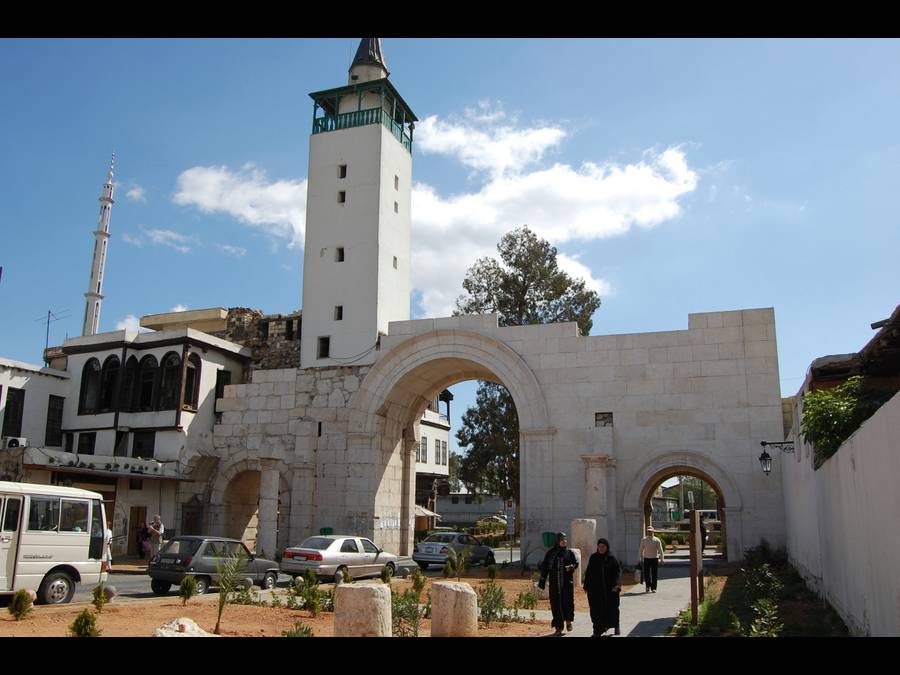
When the Roman General Pompey annexed Syria, the Romans entirely redesigned Damascus as a Roman city. Still today, “Old Town” Damascus retains its rectangular Roman design and seven extant ancient gates. The name “Ester Gate” predates the Romans, so it is not entirely clear which Roman gate corresponds, but it is most likely the Bab Sharqi (Arabic name), historically known as the Gate of the Sun, or the Eastern Gate. The gate stands at the far eastern end of the Decumanus Maximus, which in Damascus was called Via Recta. In Roman city planning, a decumanus was an east-west oriented road specifically designed for the organization and movement of military forces in a Roman city, military camp, or outpost. It would have been a long, wide by ancient standards, straight street connecting the eastern and western gates. Biblically, we know the Decumanus Maximus/Via Recta as the “Street Called Straight” in Acts 9:11. Straight Street was almost exactly one mile long and connected the eastern and western gates of the city—in Arabic, Bab Sharqi and Bab al-Jabiya. The gate structure was massive and contained three portals, one central portal for wheeled vehicles and cavalry, measuring approximately 45 feet in width, and two adjacent pedestrian portals, each approximately 20 feet wide. If this is indeed the Ester Gate, its size could have easily handled the large Parthian contingent that traversed the gate “from sunrise until after noon.” At the time of the Magi’s journey from Parthia to Jerusalem, Damascus fell under Herod’s jurisdiction for the Romans, not the Romans directly. This supports my theory regarding the size of the Parthian contingent and the route they took from Ctesiphon, northwest via the portions of the Silk Road following the Euphrates River until they reached Rezeph (Isaiah 37:12), the equivalent of modern Resafa, Syria, where they would have turned southwest on the King’s Highway to Damascus, and then following the Via Maris to Caesarea Maritima, and from there on to Jerusalem and Bethlehem.